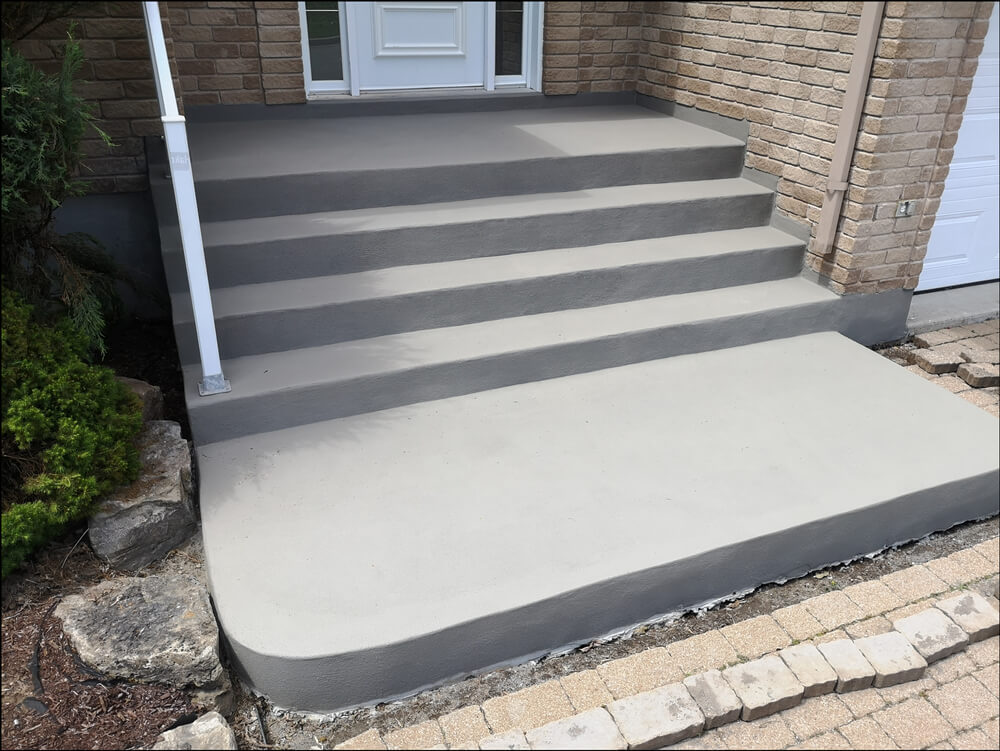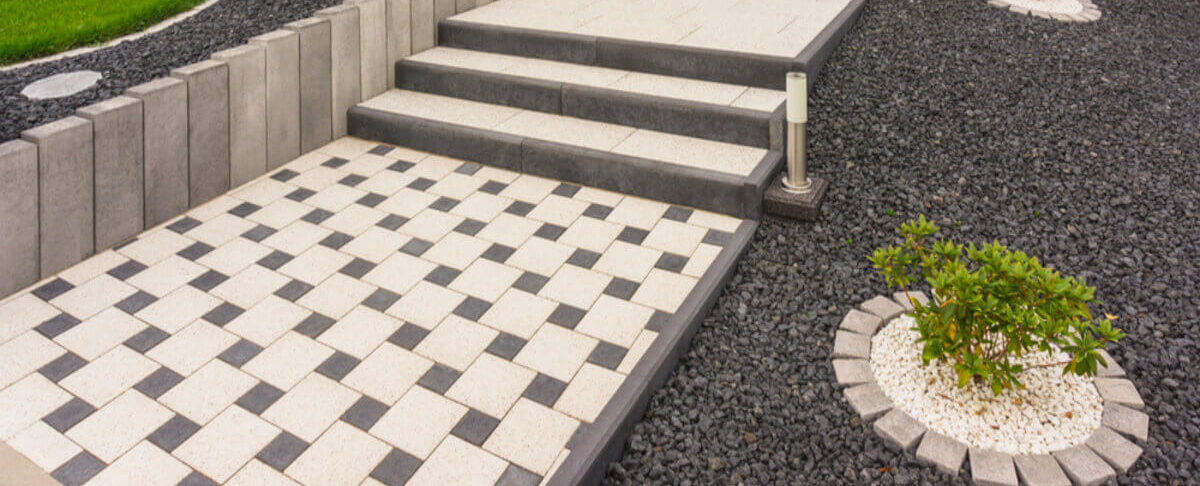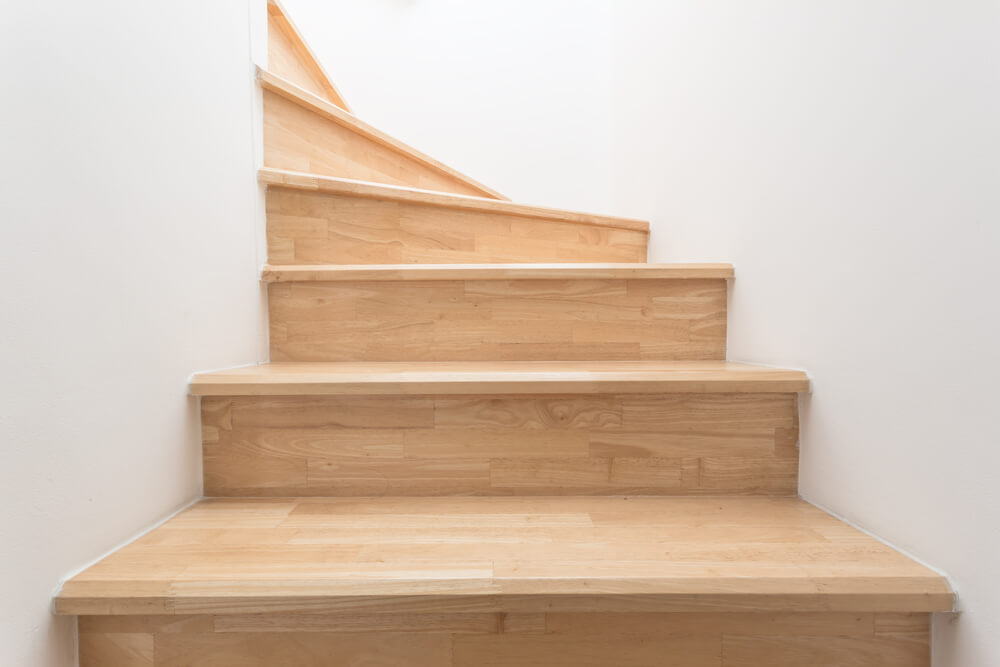When it comes to making decisions about your home’s exterior, every choice you make can impact its overall aesthetics, durability, and value. This applies to various aspects, including the stairs that lead to your porch or deck. While wood has been a common choice for outdoor steps, there’s a strong case for considering concrete steps as the superior option, especially for Minnesota homes. In this article, we’ll explore why concrete steps outshine wood steps in terms of durability, safety, maintenance, and overall value.
Concrete Steps vs. Wooden Stairs: Durability
Concrete steps boast an inherent durability that stands as a hallmark of their appeal. The resilience and strength of concrete ensure that your steps will weather the harsh conditions that Minnesota often throws your way. Unlike wood, which is prone to warping, rotting, and decay over time, concrete steps remain steadfast and resilient. With high foot traffic and exposure to extreme weather conditions being the norm, our concrete steps remain resilient, maintaining their appearance and functionality for years to come.
Counting on concrete steps from Richfield Blacktop means investing in a feature that offers longevity. With a lifespan ranging from 20 to 40 years, even in the face of Minnesota’s harshest seasons, our concrete steps prove their mettle. This lasting quality not only enhances the value of your property but also relieves you of the burden of constant maintenance.
Fire Resistance: Elevating Safety Standards
Safety is paramount in any home improvement project, and when it comes to fire safety, concrete steps hold a distinct advantage. Concrete is inherently fire-resistant, offering a crucial layer of protection that wooden steps simply cannot match. In situations where fire emergencies strike, concrete steps won’t contribute to the blaze, making them a vital safety feature for your home. On the contrary, wood steps can be highly flammable, posing a significant risk in the event of a fire. By opting for the advantages of concrete steps, you’re not just investing in durability; you’re investing in the safety and well-being of your household.
Safety Enhancements: Grip and Cushioning
Addressing safety concerns is a crucial consideration for any homeowner. Concrete steps provide the flexibility to incorporate safety features that alleviate worries about slips and falls. By applying textured finishes to the surface, you can enhance traction, particularly in wet or icy conditions. Moreover, the addition of accessories like grips and cushioning offers an extra layer of support, mitigating the impact of any accidental stumbles. These safety enhancements complement the fire-resistant nature of concrete steps while providing a secure and comfortable user experience.
Cost Comparison: Calculating Long-Term Value
While the initial cost of concrete steps might surpass that of their wooden counterparts, it’s essential to assess the long-term value proposition. Concrete steps bring forth minimal maintenance requirements, sparing you from the expenses associated with repairs, replacements, and ongoing treatments often required for wood steps. Over time, the cumulative savings in maintenance costs and the extended lifespan of concrete steps make them a financially savvy choice. The initial investment translates into a durable, low-maintenance solution that yields significant returns in the long run.
The Battle Against the Elements: Wood Steps vs. Minnesota Weather
Minnesota is renowned for its extreme weather variations, from freezing winters to hot and humid summers. These weather conditions can take a toll on outdoor structures, particularly wood steps. Wood is highly susceptible to weather-related damage, making it a questionable choice for staircases that need to endure the elements year-round.
Warping and Rotting: A Losing Battle for Wood Steps
Wood steps are prone to warping and rotting, especially when exposed to the moisture, snow, and ice that characterize Minnesota winters. As water seeps into the wood’s pores, it causes swelling, warping, and eventually rot. This not only compromises the structural integrity of the steps but also leads to a visibly unappealing appearance.
Slippery When Wet: Safety Concerns with Wood Steps
In a state where snow and rain are prevalent, safety should be a top priority. Wood steps can become dangerously slippery when wet, increasing the risk of slips and falls. This hazard is particularly concerning during the icy winter months, when the combination of moisture and freezing temperatures creates treacherous conditions.
Frequent Maintenance: The Never-Ending Cycle
Maintaining wood steps in Minnesota is a demanding task. The frequent fluctuations in temperature and moisture levels necessitate regular upkeep, including sealing, staining, and painting. Without diligent maintenance, wood steps quickly deteriorate, leading to an unsightly appearance and compromised safety.
Concrete Steps vs. Wooden Stairs: The Richfield Blacktop Advantage
Richfield Blacktop emerges as a trusted provider of concrete solutions designed to withstand the rigors of Minnesota’s climate. Our concrete steps combine durability, fire resistance, and low-maintenance characteristics to enhance both the safety and visual appeal of your home’s exterior. With an extensive track record of excellence and a commitment to delivering enduring quality, we’re your partners in creating concrete steps that stand the test of time.
Making the Superior Choice: Choose Concrete Steps

Elevate your home’s exterior by making the superior choice—opt for concrete steps. Their inherent durability, safety benefits, and long-term cost efficiency position them as the ideal option for Minnesota residences. Contact Richfield Blacktop today to explore the world of concrete solutions and witness the transformation of your outdoor space with top-tier, long-lasting concrete steps.





